How Trees Increase Home Property Value in New York
Go Back To Previous PageWhen selling your home in New York, you must weigh the pros and cons of certain repairs and services to get the highest sale price with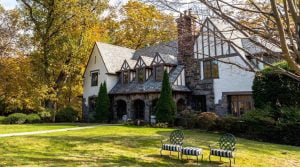 the lowest investment of time and money. Most homeowners turn to interior renovations, such as updating kitchens and bathrooms. However, many people don’t realize that tree maintenance in New York can deliver more profit for less money upfront. Below, we’ll discuss which trees in NY increase property value the most and how tree maintenance can improve your home value.
the lowest investment of time and money. Most homeowners turn to interior renovations, such as updating kitchens and bathrooms. However, many people don’t realize that tree maintenance in New York can deliver more profit for less money upfront. Below, we’ll discuss which trees in NY increase property value the most and how tree maintenance can improve your home value.
We will also discuss the costs associated with tree services and which provide the most value for your investment.
Which Trees Increase NY Home Value the Most?
No matter where you live, the trees that will increase property value will always be species that can thrive in your hardiness zone. Plant hardiness zones describe which trees and plants can thrive in an area based on climatic and geologic factors, and New York ranges from 3a to 6b.
The trees listed below are well-suited for these zones. They’ll look appealing, healthy, and have a better chance of increasing home value.
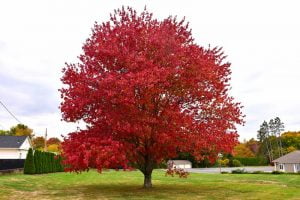
-
Weeping Cherry Tree
The weeping cherry tree is a small and manageable species, making it ideal for New York’s smaller properties and homeowners with little time to care for their trees.
This species flowers in the early spring and summer, adding natural beauty to any property.
-
Red Maple
Once established, red maple trees are hardy and easy to care for, thriving throughout New York.
They can significantly increase property value, thanks to their beautiful coloration and low maintenance requirements.
-
Linden Trees
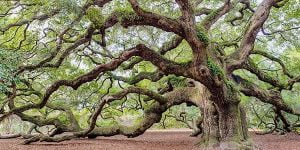
Linden trees are popular in New York because they adapt well to the climate and urban environment. They add beauty to any landscape and are relatively easy to care for.
Most prospective buyers will find them very appealing.
-
Live Oak
Live oak thrives in many conditions, including those throughout New York. Most buyers will adore the impressive appearance of this species, and the ease of care once established helps them bolster property values.
Importance and Cost of Large Tree Maintenance to Increase Home Value
It’s usually not enough to have trees on your property — they must also be well-maintained to boost your home value. Sickly, dead, or potentially hazardous trees can negatively impact the value of your home.
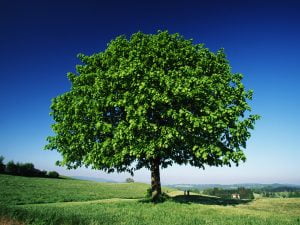
Below are some of the most crucial types of tree maintenance you can do for your trees. These will all help improve your property’s appearance and value.
-
Annual Pruning
Regular pruning is crucial if you want your trees to add to your property’s value. Unkept trees often exhibit erratic growth patterns that appear unappealing and messy, and can be detrimental to the tree’s health.
Branches left to grow on their own can compete with one another, and they limit the light that gets to the lower limbs. Sometimes, they go to dead or dying branches in the canopy.
Hiring an arborist to perform annual pruning typically costs around $175 per tree. The service will make the trees more aesthetically pleasing,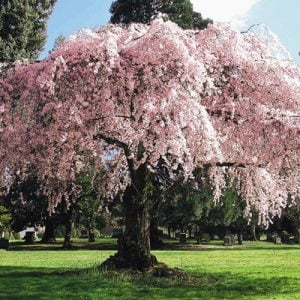 promote healthy growth, and ensure that no dead or dying branches pull resources away from healthier ones.
promote healthy growth, and ensure that no dead or dying branches pull resources away from healthier ones.
Pruning also helps protect the tree against diseases and insect infestations that can harm or kill it.
Real estate experts maintain that well-maintained trees can significantly impact property value, up to approximately 10% in some cases.
In New York, invasive insects such as the Asian longhorned beetle, the emerald ash borer, the gypsy moth, and the hemlock woolly adelgid can infest stressed or dying trees. These insects tend to feed on sapwood or leaves.
They gradually deprive the tree of its resources and kill it for weeks or months.
Arborists can apply pest treatments to your trees to help protect them from these invasive species. Tree-safe pesticides can be used on the bark, limbs, or leaves, or placed in the soil, or injected into the trunk. Most pesticide treatments cost around $100 every three to four months.
Pest treatments may seem expensive, but they can have a positive impact on your property value in the long run. Infested trees often appear unappealing and can significantly detract from your home’s curb appeal.
If prospective buyers are educated about invasive species in New York, they may identify an infestation and recognize that the tree is at risk of dying and falling. Some buyers may not wish to deal with the expense or headache of the resulting tree removal.
-
Disease Treatments
Finally, New York trees are prone to various tree diseases, including oak wilt, beech leaf disease, root rot, anthracnose, and verticillium wilt.
These diseases all have severe effects on tree species native to New York. Many can kill a tree shortly after an infection, leaving it to look wilted, sickly, or dead.
Most arborists in New York can apply fungicides or implement tree injections to keep your trees safe for around $75 every few months. Depending on the diseases prevalent in your area, you may only need one or two treatments per year.
Treatments for the disease will help keep your trees alive and visually appealing. You can also inform buyers about the efforts you make to maintain the health of your trees. This will instill confidence in them that you genuinely care for the well-being of your home. Also, they will be more likely to think you maintain the rest of your home just as well.
Wrapping Up: How Trees Increase Property Value
Particular tree species in New York are well-known for boosting property value. However, all well-maintained trees will add to the natural beauty of your home.
Paying annual pruning and protection services for pests and diseases may seem unnecessary. However, these relatively small investments will help maintain your home’s curb appeal and instill confidence in buyers that it is well-maintained and cared for. Most buyers will be willing to pay more for a house they feel comfortable purchasing.


